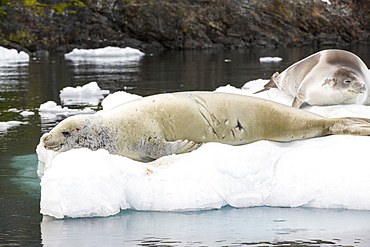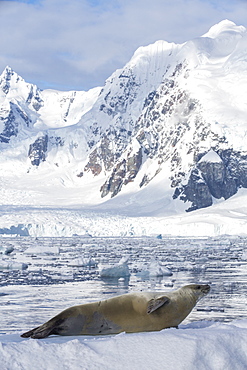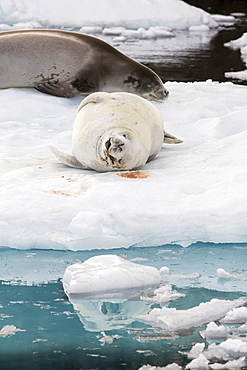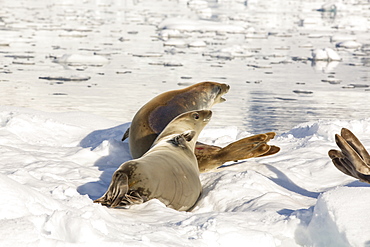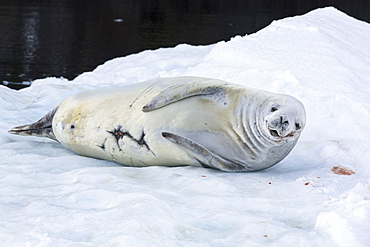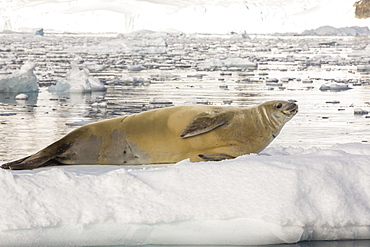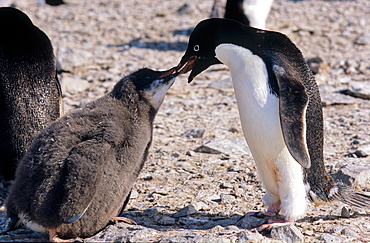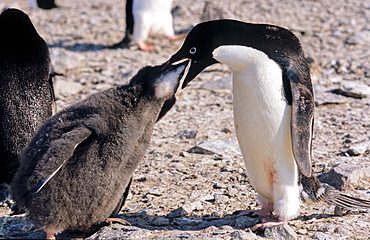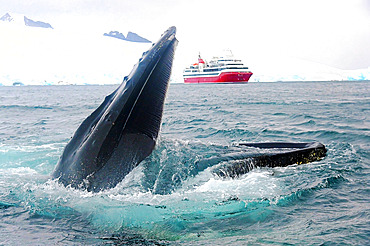Results
3 results found
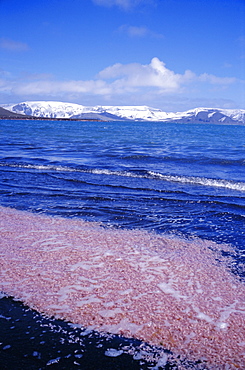
Krill swarm cooked pink by fumarole activity on the volcanic island of Deception Island, Antarctica, Polar Regions
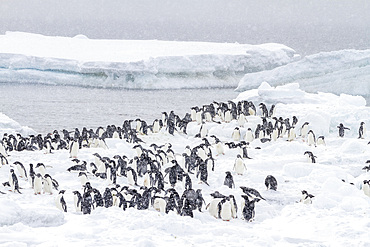
Adelie penguins (Pygoscelis adeliae), in snow storm at breeding colony at Brown Bluff, Antarctic Peninsula, Antarctica, Polar Regions
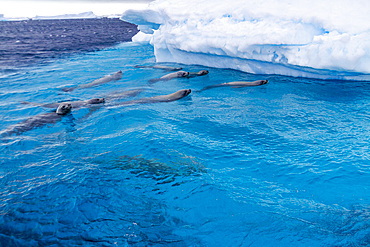
Curious crabeater seals (Lobodon carcinophaga), swimming near iceberg at Booth Island near the Antarctic Peninsula, Polar Regions
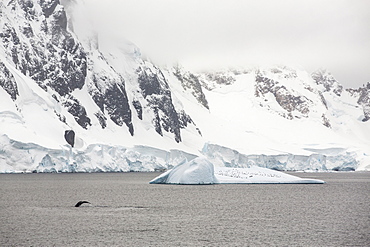
Humpback Whales (Megaptera novaeangliae) feeding on Krill in Wilhelmena Bay, Antarctic Peninsular and surfacing wth a metre of a zodiak. The whales migrate here in the summer to feed on the Krill. Krill numbers have declined by over 50%. They feed on algae that grows on the underside of sea ice, As the sea ice melts, both algae and krill decline. This shot has penguins resting on an iceberg in the background.
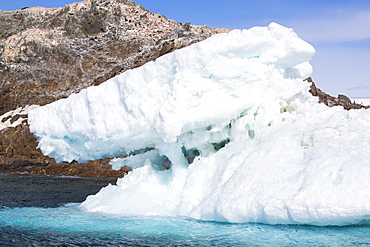
Guano in an Adelie Penguin, Pygoscelis adeliae, colony at Madder Cliffs, Suspiros Bay, at the west end of Joinville Island, Antarctica. Adelie's are a true Antarctic species which are suffering as a result of climate change, The Antarctic Peninsular, their only breeding grounds, is one of the fastest warming areas on the planet. This is causing Adelies to migrate south. They are reducing in numbers, they feed almost exclusively on Krill, which is also declining as a result of climate change.

Humpback Whales (Megaptera novaeangliae) feeding on Krill in Wilhelmena Bay, Antarctic Peninsular. The whales migrate here in the summer to feed on the Krill. Krill numbers have declined by over 50%. They feed on algae that grows on the underside of sea ice, As the sea ice melts, both algae and krill decline. An expedition cruise ship in the background
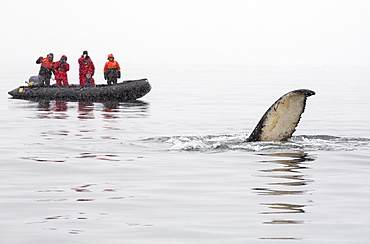
Humpback Whales (Megaptera novaeangliae) feeding on Krill in Wilhelmena Bay, Antarctic Peninsular. With passengers from an expedition crusie in Zodiaks. The whales migrate here in the summer to feed on the Krill. Krill numbers have declined by over 50%. They feed on algae that grows on the underside of sea ice, As the sea ice melts, both algae and krill decline.
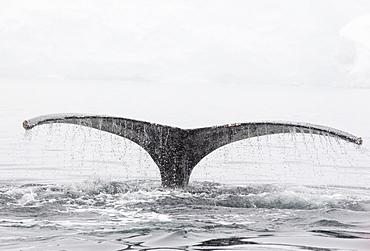
Humpback Whales (Megaptera novaeangliae) feeding on Krill in Wilhelmena Bay, Antarctic Peninsular. The whales migrate here in the summer to feed on the Krill. Krill numbers have declined by over 50%. They feed on algae that grows on the underside of sea ice, As the sea ice melts, both algae and krill decline.
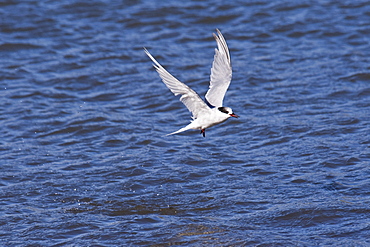
Antarctic tern (Sterna vittata) adult bird with krill in its beak, South Georgia, South Atlantic Ocean, Polar Regions
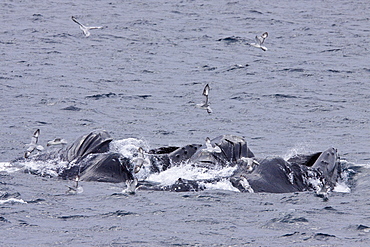
Adult humpback whale (Megaptera novaeangliae) surface lunge-feeding on krill near the Antarctic Peninsula, Antarctica, Southern Ocean
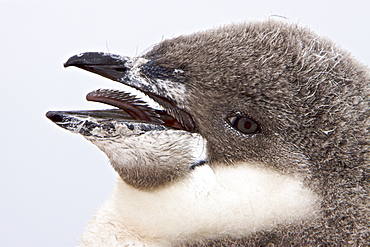
Chinstrap penguin (Pygoscelis antarctica) chick head detail at colony on Useful Island near the Antarctic Peninsula. There are an estimated 2 million breeding pairs of chinstrap penguins in the Antarctic peninsula region alone, perhaps as many as 7.5 million breeding pairs in all of Antarctica. Their name derives from the narrow black band under their heads which makes it appear as if they are wearing black helmets, making them one of the most easily identified types of penguin. Other names for them are "Ringed Penguins", "Bearded Penguins", and "Stonecracker Penguins" due to their harsh call. They grow to 68 cm (27 in). The average adult weight of a Chinstrap Penguin is 4.5 kg (10 lbs). Weight can range from 3 to 6 kg (6.6-13.2 lbs), with males being slightly larger and weight varying based on where the penguin is in the breeding cycle. Their diet consists of krill, shrimp, and fish. On land they build circular nests from stones, and lay two eggs, which are incubated by both the male and the female for shifts of five to ten days. They can also breed on icebergs, though they prefer non-icy conditions. The chicks hatch after about 35 days, and have fluffy gray backs and white fronts. The chicks stay in the nest for 20?30 days before they go to join a creche. At around 50?60 days old, they moult, gaining their adult plumage and go to sea. The Chinstrap Penguin was first described by German naturalist Forster in 1781. Its specific epithet was often seen as antarctica, however a 2002 review determined the genus Pygoscelis was masculine, and hence the correct binomial name is Pygoscelis antarcticus.
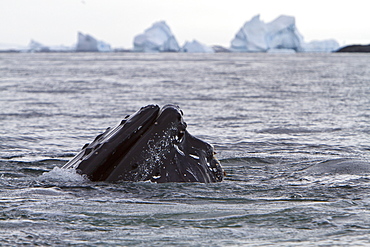
Humpback whale (Megaptera novaeangliae) calf breaching near the Antarctic Peninsula, Antarctica, Southern Ocean
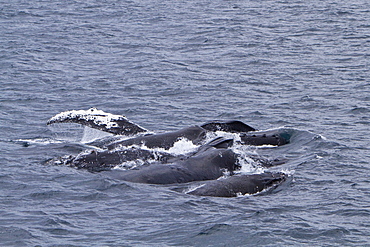
Adult humpback whale (Megaptera novaeangliae) surface lunge-feeding on krill near the Antarctic Peninsula, Antarctica, Southern Ocean

Adult humpback whale (Megaptera novaeangliae) surface lunge-feeding on krill near the Antarctic Peninsula, Antarctica, Southern Ocean

Adult humpback whale (Megaptera novaeangliae) surface lunge-feeding on krill near the Antarctic Peninsula, Antarctica, Southern Ocean

Humpback whale (Megaptera novaeangliae) spy-hopping near the Antarctic Peninsula, Antarctica, Southern Ocean

Humpback whale (Megaptera novaeangliae) surfacing near the Antarctic Peninsula, Antarctica, Southern Ocean
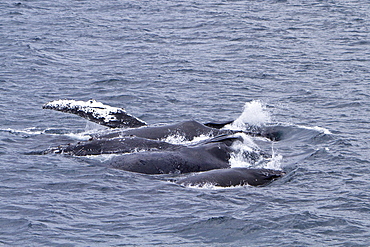
Adult humpback whale (Megaptera novaeangliae) surface lunge-feeding on krill near the Antarctic Peninsula, Antarctica, Southern Ocean

Adult humpback whale (Megaptera novaeangliae) surface lunge-feeding on krill near the Antarctic Peninsula, Antarctica, Southern Ocean
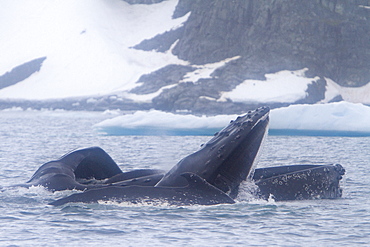
Adult humpback whale (Megaptera novaeangliae) surface lunge-feeding on krill near the Antarctic Peninsula, Antarctica, Southern Ocean
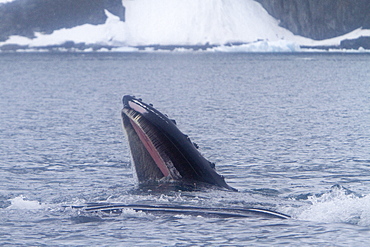
Adult humpback whale (Megaptera novaeangliae) surface lunge-feeding on krill near the Antarctic Peninsula, Antarctica, Southern Ocean
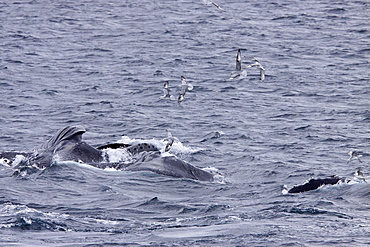
Adult humpback whale (Megaptera novaeangliae) surface lunge-feeding on krill near the Antarctic Peninsula, Antarctica, Southern Ocean

Adult Gentoo Penguin (Pygoscelis papua) trying to feed its chick with krill. Neko Harbour, Antarctica
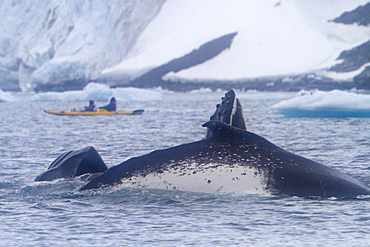
Adult humpback whale (Megaptera novaeangliae) surface lunge-feeding on krill near the Antarctic Peninsula, Antarctica, Southern Ocean
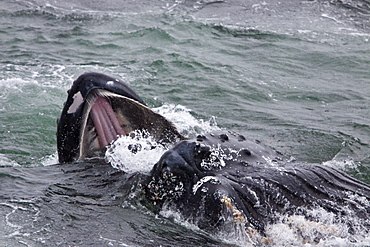
Adult humpback whale (Megaptera novaeangliae) surface lunge-feeding on krill near the Antarctic Peninsula, Antarctica, Southern Ocean
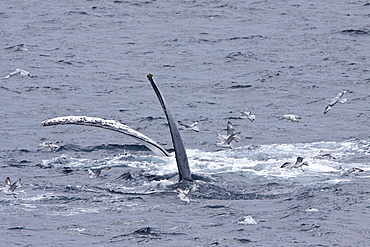
Adult humpback whale (Megaptera novaeangliae) surface lunge-feeding on krill near the Antarctic Peninsula, Antarctica, Southern Ocean
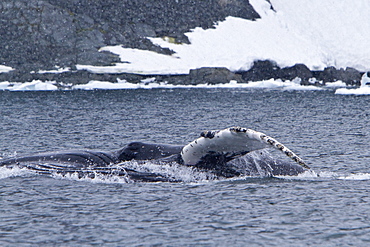
Adult humpback whale (Megaptera novaeangliae) surface lunge-feeding on krill near the Antarctic Peninsula, Antarctica, Southern Ocean
